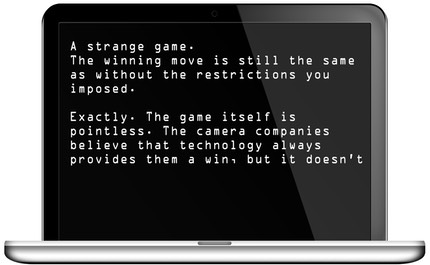(commentary)

Here’s how the game works: imagine that all the camera makers (Canon, Fujifilm, Nikon, Sony, etc.) have:
- The current state-of-the-art sensor
- The maximum number of pixels currently available
- The current state-of-the-art focusing ability
- A full set of prime lenses from 14 to 200mm (equivalent)
- A full set of fast zoom lenses that cover 14 to 200mm (equivalent)
- A full set of convenience zoom lenses (whatever you care to think that means)
- Full support from third parties such as Sigma and Zeiss
- A full set of exotic long telephoto lenses
- A complete radio controlled flash system
Which camera maker do you pick? Note that I’ve taken out most of the technical decisions that virtually all of you are using to make your buying choices. Yet I’m pretty sure there are plenty of things left to help you decide.
Really?
Yes, really.
Consider:
- Nikon’s recent string of products with initial shipment issues
- Canon’s anyone-can-join (for money) CPS (Canon Professional Services)
- Sony’s use of EVF over OVF
- Olympus’s addition of interesting features such as pixel shift and focus shift
- Panasonic’s near invisible customer service and repair (here in the US)
- Nikon's and Pentax’s deep commitment to legacy lens use
- Some vendors' attention to video features/performance
But there’s far more than that. How about ergonomics? Nikon’s dials are horizontally-opposed and don’t require you move your finger from the shutter release to use, Canon’s are vertical and offset, and will force your finger off the shutter release. Nikon does minimal button overload, Canon lots of it, while Nikon puts the buttons on the left (for the same reason the dials are opposed) but Canon puts a lot of them on the right top where they’re very near your right fingers at all times. You’re going to prefer one of those design implementations to the other (or perhaps yet another vendors' interpretation).

Really?
Yes, really.
What happens in the current state of the market is a giant game of leapfrog. That’s the way it’s been pretty much since the D1 first appeared in 1999. For short periods of time one system or another will appear to have a technological advantage, usually due to something at the sensor, sometimes due to lens availability. Over time, that advantage disappears, and more often than not, the one with the temporary advantage gets leapfrogged by another.
Early on a few Canon users were switching to Nikon (because of the D1h/D1x), then a few Nikon users were switching to Canon (because of the 1D/1Ds), then back to Nikon (D3/D300), then back to Canon (5D/1Dx), and this just continues on ad infinitum as the two companies leapfrog one another.
Companies think that they can just iterate “ahead” of their competitor forever, but that’s not quite how it works out in the real world, obviously. First, there’s that history that suggests leapfrogging tends to happen instead of one company staying out ahead. Second, there’s the soft “lock-in” that occurs the minute someone has bought one or another of the systems and acquires lenses. Abandoning one system for another because of a temporary technology difference comes along just isn’t using money smarts.
True, a few professionals play the switching game for a reason: they’re racing to stay ahead of the rest of the pack. I’ve noticed that more and more that RFQs from agencies and others seeking pro photographer services have upped the ante over time. They demand higher resolution data sets, and these days also demand video shot simultaneously, so if you and your camera system can’t do what’s being requested, you just went non-competitive.
Still, with 12-13m interchangeable lens cameras being sold this year, very few of those are sales to working pros who have encountered those ever-increasing technical requirements from clients. Almost all of those sales are to consumers and enthusiasts, and most of those are either upgrades or side-grades.
Indeed, the dynamics of the market are completely locked in at this point as long as the camera companies continue to do what they’ve been doing. Very few new customers coming in and getting soft locked. Fewer and fewer existing customers upgrading because they have “good enough", and very few side-grading due to soft locks. Couple that with the technical changes getting smaller and smaller in terms of meaningfulness to the average shooter, and basically we have the market we’re in: declining sales over time. 100mp won’t fix that. Four stops more dynamic range won’t stop that. Filling all lens offering holes won’t fix that.
What those things do is extract as many of the remaining user base as possible into upgrading and side-grading. And most of that is being done through marketing hype and Internet buzz, not through observed, improved user results. Did I really care that I took 24mp DX photos in Africa this year instead of 36mp FX photos? Not particularly.
I’ve written it for a decade now: cameras need reinvention. Camera makers are playing to a smaller and smaller audience by performing the same iterative upgrading. Long held user problems aren’t getting solved, and the needs of potential new users (the smartphone crowd) aren’t even close to being met.






